#ainu mosir
Explore tagged Tumblr posts
Text

AINU MIKU! AINU MIKU!
#hatsune miku#diversity miku#ainu miku#ainu mosir#indigenous miku#indigenous people#my wish was granted thank the kamuy#and thank you the dani kamuy for showing it to me bc i don't use the elon musk app anymore#not my art#that's why it's a link and im glad it shows the whole picture in the insert#vocaloid#international miku
2K notes
·
View notes
Text
Clarice Jensen - Fishing
1 note
·
View note
Text
Ainu, Indigenous people of Japan
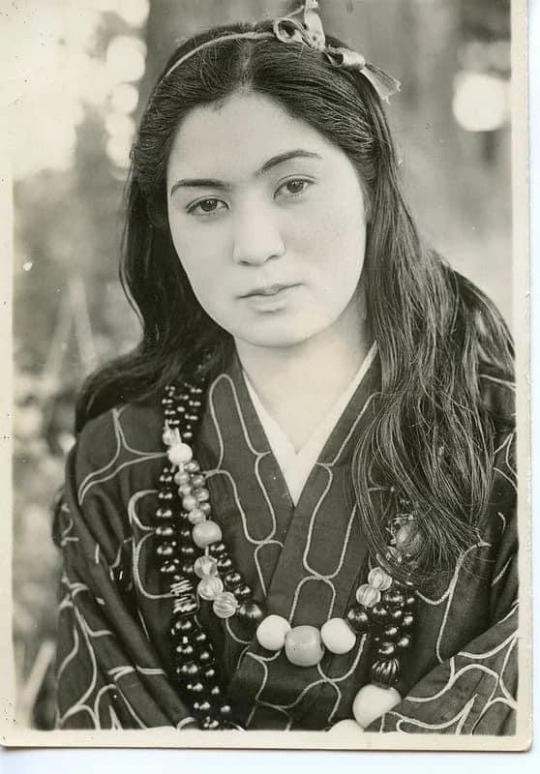

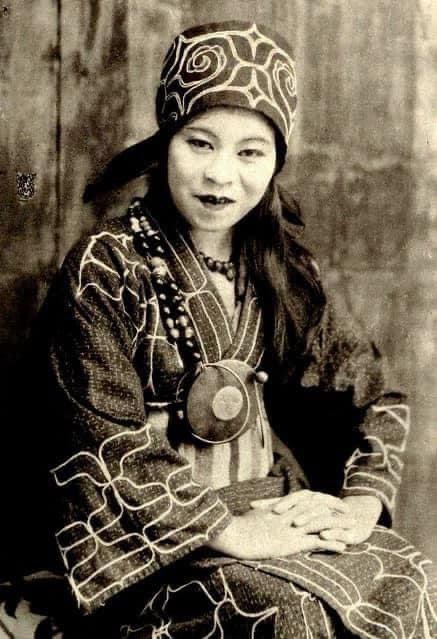
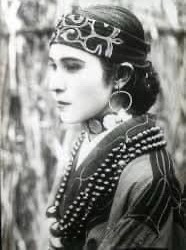
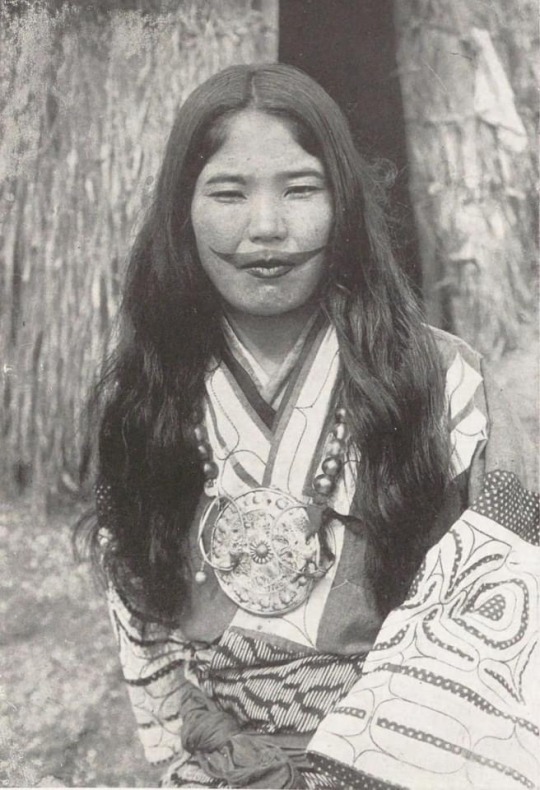
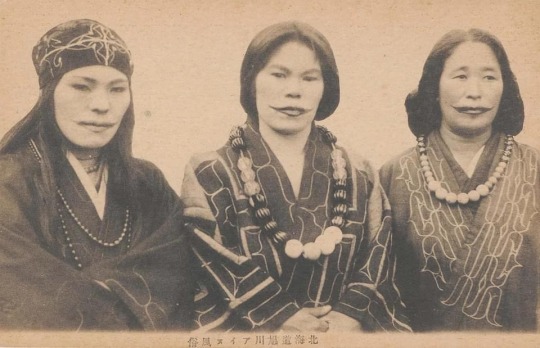
The Ainu are an ethnic group of related indigenous peoples native to northern Japan, including Hokkaido and Northeast Honshu, as well as the land surrounding the Sea of Okhotsk, such as Sakhalin, the Kuril Islands, the Kamchatka Peninsula, and the Khabarovsk Krai; they have occupied these areas known to them as "Ainu Mosir" (Ainu: アイヌモシㇼ, lit. 'the land of the Ainu'), since before the arrival of the modern Japanese and Russians. These regions are often referred to as Ezo (蝦夷) in historical Japanese texts. X
1K notes
·
View notes
Text

In the late 1800s, the Japanese government formally colonized Hokkaido. And Okinawa. And Taiwan. And the Sakhalin and Kuril Islands. The Korean Peninsula, and eventually, by the 1930s, Manchuria. The Japanese went to war with Russia and won, the first time an Asian country beat back the incursions of a European power in living memory. On Hokkaido, the Japanese government pursued a policy of assimilation, hiring American consultants fresh from the drive to assimilate North American Indigenous people. The government forced the Ainu into Japanese-speaking schools, changed their names, took their land, and radically altered their economy. They pushed the Ainu into wage labor, notably in the commercial herring fishery after Japanese farmers discovered fish meal was the perfect fertilizer for rice paddies.
For much of the 20th century, the Ainu narrative created by outsiders revolved around their demise. But something else caught the attention of Japanese colonists and others traveling to Mosir: the Ainu’s relationship with bears.
To the Ainu, the bear god is one of the mightier beings in the parallel spirit homeland, Kamuy Mosir. After death, bears journeyed to this spirit land, giving their meat and fur to the people. To honor this generosity, the people sent the bear’s spirit home in a special ceremony, iyomante.
35 notes
·
View notes
Text
My Japanese Empire Les Misérables AU because I don't want to write my boring dissertation:
Set before 1937, Japan is nearing the date in which they would wage the Second Sino-Japanese war and kickstart World War II in Asia. Japan has eaten Ainu Mosir, Ryuukyuu Kingdom, Taiwan, and Korea, to name some of the territories.
This AU takes place in Korea (prior section), Japan (mid section), and Hokkaidou (latter section), which much focus given to the Koreans, ethnic and political minorities in Japan, and Ainus.
:
When Marius spews pro-colonial psychology he was taught, as a mental defense from acknowledging the truth once Éponine shares frustration from the treatments from the Wajins including from him, he quote "To be free" is used to shut him up.
As I made Les Amis a part of the Korean storyline portion of this AU, Combeferre cannot make this statement, nor can I produce a replica of Marius embarrassing himself in a room of revolutionaries.
Instead, I have the scene which I have stated, where Éponine, dejected and depressed, is blunt in her needs and desire for the freedom of Ainu Mosir.
It was either her or Cosette to use it, but if Cosette was going to narratively grow closer with the lad, I thought it was inappropriate. When the two meet as well, they will both be in Hokkaidou so, while politically it makes sense, it might be geographically might not give much power and emotions to the words compared to if Éponine was the speaker.
Instead, in another scene, Cosette gives a speech to Marius about 'not forgetting'. She does not forgive his actions as an active coloniser, but that she can still build a relationship with him (most likely friendship) because he promised to do everything in his power to stop further colonisation efforts.
She tells him to not 'look back in shame of the past and thus not acknowledge it' but instead to 'educate oneself and do one's duty to never forget the pains that was caused as long as there still exists the repercussions of your nation's offence.'
There's imagery of mugunghwa (Korean rose/national flower) blooming on a branch as she talks of a future possibility of healing.
As the champions of freedom and liberation and breaking out of sympathising with the colonisers through faith in the propaganda and biased perspectives from all around them, Cosette and Éponine represent the individual and personal protest one can do as a minority in the political world.
They both fight mentally, undo the harmful miseducation of one's inferior status, and assigns duty to the sympathisers to keep their stories and efforts alive.
I do want them to do more, and I'll give it a think on what other messages they will give to their surrounding characters.
9 notes
·
View notes
Text

Japan, like any other nation, is an ocean of diversity, home to multiple minority groups. One of these groups is Japan's indigenous people or Ainu. These hunter-gatherers worshipped nature and animals, spoke a language unrelated to any other, and had unusual customs like tattooing their lips.
Ainu people are historically residents of parts of Hokkaido (Northern island of Japan) Kuril Islands, and Sakhalin. Origin of Ainu people and language is, for most part, unknown. However, there have been many theories on the subject. In 2008, Japanese govt. officially recognized existence of Ainu as an indigenous people, although their distinct language, culture, and religious practices have survived for millennia.
As Japan grew as country, Ainu people were pushed farther and farther north, until ultimately they were relegated almost entirely to the frigid island of Hokkaido. But in 1899, Japanese government took inspiration from treatment of indigenous people in American West. Under Meiji Restoration, Ainu had their traditional lands taken from them and their language and cultural practices were outlawed. It's a depressingly familiar story and damage done is only recently being addressed. Appearance of Ainu that significantly different from Japanese culture. First of all, both men and women keep their hair at shoulder length and wear traditional Ainu garb. Men, never shaving after a certain age, usually have full beards, and women undergo mouth tattooing to signify their coming to adulthood.
As hunter-gatherers, Ainu lived off of land. Common foods included deer, bear, rabbit, fox, salmon, root vegetables and much more. Unlike Japanese, Ainu always cooked their food, never eating anything raw. Common hunting weapons included poisoned spears and bow and arrows. Ainu were similar to Japanese is in way of religion. Ainu, just like Japanese people, were animists and believed that all things are inhabited by spirits known as kamuy. While there are many gods in Ainu belief, one of most important is known as Kim-un Kamuy or god of bears and mountains. All animals are thought to be manifestations of gods on Earth in Ainu culture, however, bear is believed to be head of gods and is therefore known as Kamuy or "God." Traditionally, Ainu sacrificed bears in order to release kamuy within them to spirit world. One tradition, called lotame, involves raising of a young bear cub as if it were an Ainu child and then sacrificing once it has come of age.
For hundreds of years, Ainu have been either ignored, discriminated against, or forced to assimilate with mainstream Japanese culture, which unfortunately, led Ainu language and culture to the brink of extinction. In 2008, Ainu finally gained parliamentary recognitions a people with a "distinct language, religion, and culture." As it began in early 15th Century CE, when Japanese settlers began pushing into Ainu land on the island known today as Hokkaido. Later, under harsh policies of Meiji Era, Ainu were prohibited from speaking their language and forced to use Japanese names. They were barred from their hunting and fishing traditions. Today, concerted effort is being made to preserve Ainu culture and language. And with the 2020 Olympics to be held in Japan, the government has plans for a facility centered on Ainu culture. Between these and other efforts in Hokkaido villages, perhaps a little life can be breathed into the land known as Ainu Mosir, “land of the human beings.”
📷 : Laura Liverani
© The Washington Post
0 notes
Text
Get Ready to Discover Hokkaido Through a Unique Journey, Yukar From The Abyss

Yukar From The Abyss journey into the otome visual novel game is still due to get a Linux and Steam Deck release with Windows PC. Based on further information provided by the developer LocaGames. Currently available on Steam with 88% Positive reviews. Kurumi Oki's life in Tokyo was hectic and tiring. Wanting a change, she moved to Hokkaido. But little did she know, her life was about to become an unusual journey that is Yukar From The Abyss. As for native support going forward, here's a status update:
...our last update on Steam broke proton compatibility on Steam Deck so it currently doesn't run. Now that we have time to dedicate to Steam Deck and Linux we are working on fixing it ASAP, and getting a native Linux version off the ground.
The team at LocaGames has been putting their efforts into launching the game on Switch. As a result, their journey came to a halt, since their latest update broke Proton support for Yukar From The Abyss. Which is what they were counting on for the Steam Deck. But the good news is, since the game is built with Unity 3D, they're now working towards developing a native port for both Linux and Steam Deck.
The Unexpected Beginning:
One night, Kurumi was coming back from hanging out with her friends. She fell asleep on the train and missed her stop. She woke up at a strange station called Kamuy Mosir. Feeling lost and trying to find her way, she stumbled upon a group of people dressed in unusual costumes, celebrating something. But things took a wild turn when they started chasing her, and a young man caught her. He said something unbelievable – Kurumi was dead, and he was taking her to the underworld.
Yukar From The Abyss otome visual novel journey Trailer
youtube
Kurumi's journey didn't stop there. Running from mysterious creatures, she also somehow opened a door to a world of Gods. Here, she had to face tough challenges, explore a world full of wonders, and might even find out what happens when a human falls in love with a God. What makes the Yukar From The Abyss journey unique is that your choices also decide what happens next. Since your decisions will guide Kurumi's fate. Will she find happiness, or is a darker destiny waiting for her?
Features:
Four Main Paths: There are four different main paths to explore, and each path has three unique outcomes.
Collectible Art: You can collect six special art scenes for each character.
Learn Ainu Language: The story includes a feature to learn about the ancient Ainu language.
Choose the Protagonist's Name: You can pick a name for Kurumi to make the story feel more personal.
Playtime: Each path takes around 2 hours to complete.
This Yukar From The Abyss otome visual novel is a journey where you get to choose what happens next. It's a mix of adventure, mystery, and the supernatural. While taking place in a world full of unique characters and challenging decisions. Whether you're into exploring new worlds, meeting original characters, or making choices that matter. This story has something for you in the adventure. Available on Steam, priced at $19.99 USD / £16.75 / 19,50€. Coming to Linux and Steam Deck with Windows PC.
1 note
·
View note
Text



Since I couldn't find an 'Ainu Miku' post, called that, I found these when I was looking for it so it must be adjacent, though they call this 'Yuki Miku/Snow Miku'. And the Nendos for what they call "Snow Miku"... I mean, I'm not going to say much in regards to the brutalisation of the indigenous Ainu people in the Japanese colonial adventures. But some of those clothes are Ainu traditional attire inspired, so I'm glad to have Ainu Miku. The art from 2015 is already inspired by Ainu clothes. In the Nendos, the next to last is the one that resembles Ainu the most, I think.
#hatsune miku#not my art#linked thoroughly in the post#diversity miku#ainu people#ainu culture#ainu mosir#indigenous miku#indigenous peoples#vocaloid#snow miku#colonisation mention
22 notes
·
View notes
Text
I love Netflix's recommendation algorithm.
In what universe do I, or any other human being ever, want to follow up Ainu Mosir with The Dragon Prince?
0 notes
Text
An Interview with Takeshi Fukunaga, Director of Mountain Woman [New York Asian Film Festival 2023]
Mountain Woman was one of the most distinctive films that I saw at the fest and when I talked about it as part of the Heroic Purgatory podcast, I found my co-host also rated it highly and so there was a lot to ask director Takeshi Fukunaga about. From: https://www.nyaff.org/nyaff23/films/mountain-woman Takeshi Fukunaga may best be known for his Hokkaido-set drama Ainu Mosir (currently on…

View On WordPress
0 notes
Photo
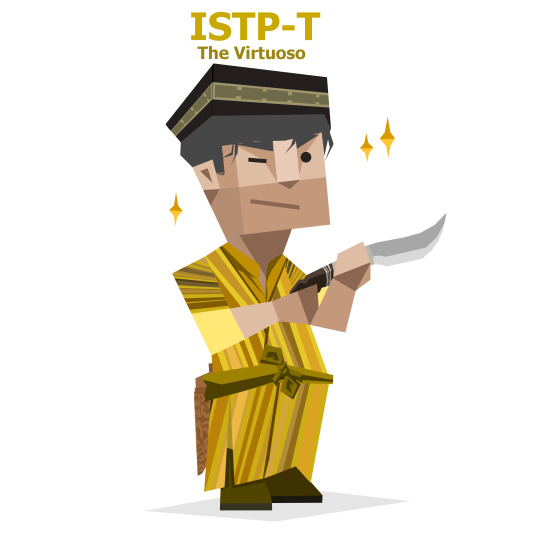




JP: MBTIアバターの私の解釈に取り���んでいます、私が新しいものを更新することに注意してください、楽しんでください!
INFP:アイヌ :-) ISTP:ウズベキスタン ENTJ:モンゴル ESFP:コロンビア
EN: Working on my interpretation of MBTI Avatar, please note that I will update the new one, have fun!
INFP: Ainu :-) ISTP: Uzbekistani ENTJ: Mongolian ESFP: Colombian
#mbti#mbti personalities#mbti types#infp#istp#esfp#entj#art#fanart#edit#mbti art#mbti edit#entj x infp#infp x entj#colombia#mongolia#uzbekistan#ainu#ainu mosir#my version
185 notes
·
View notes
Text

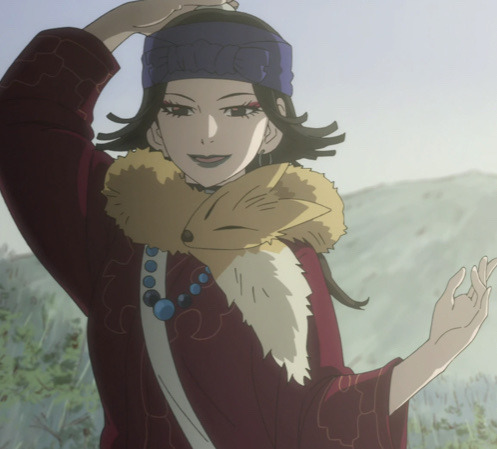
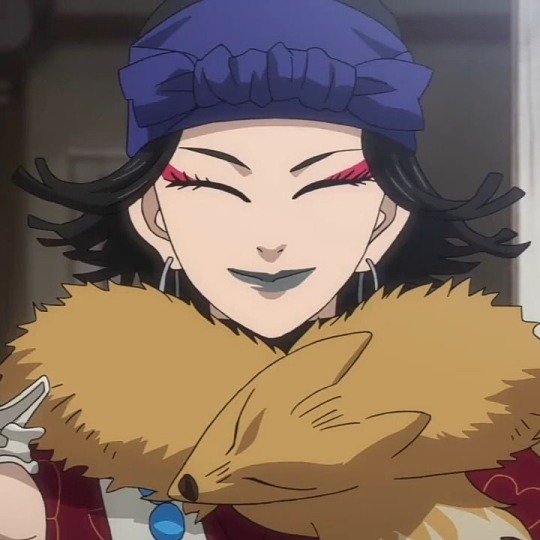



“Shall I try some divination?”
-𝐈𝐧𝐤𝐚𝐫𝐦𝐚𝐭
Inkarmat supremacy<333
☾∘∙ creds:
@Satoru Noda (Danbooru/Creator of Golden Kamuy-)
✧ ∘ 𝙋𝙡𝙚𝙖𝙨𝙚 𝙜𝙞𝙫𝙚 𝙘𝙧𝙚𝙙𝙞𝙩 𝙞𝙛 𝙪𝙨𝙞𝙣𝙜/𝙧𝙚𝙥𝙤𝙨𝙩𝙞𝙣𝙜-!
☆ ° 。ㅤ→ ༄ ‧₊˚
#anime icons#anime pfp#manga icons#anime#animanga#manga pfp#manga#anime layouts#golden kamuy#inkarmat#ainu mosir#ainu culture#kamuy#foxes#hokkaido#sakhalin
54 notes
·
View notes
Text
Hadley's Les Misérables AU because I feel like it
A whopping number of two (2!) people showed interest in my Les Misérables AU set during the time of the rise of the Japanese Empire.
Anyways, I created a timeline list of prominent events in this AU (I tried to keep it PG, but obviously there's discretion advised):
I've added some words into the respective languages so you can easily copy and paste if you want to find out more about it. Other than that, you can ignore them.
1869 -> Official annexation of Ainu Mosir (アイヌモシㇼ). It comes to be known as Hokkaidou in modern Japan.
1879 -> Javert is born in the formally known Ryuukyuu kingdom (琉球王国). Okinawa becomes a prefecture in Japan. He believes this is a sign, and that he is Japanese. He later immigrates to Japan for education and occupation.
1889 -> Jean Valjean is imprisoned in Joseon (조선) for stealing rice grains. He is put into suspicion being anti-Japan. As Joseon nears its end with the encroaching Japanese, his sentence extends and extends, being transferred to different locations until he finally escapes coal mining labour prison in Hokkaidou in 1908.
1895 -> First Sino-Japanese War and the official annexation of Taiwan. (I need to do much more research)
1899 -> Hokkaido Former Aborigines Protection Act (北海道旧土人保護法公布) is enforced. The two main diet (deer and salmon) are forbidden to be hunted. This forces Ainus to starve as they were a hunting community, and it also forced them to do unfair trading with the Wajin (Japanese). They also could not farm as they were only given poorly fertilised farms.
The Thénardiers (M. and Mme.), who are Ainu, remember this event. They hold onto the starvation they experienced during and after this time.
1908 -> Jean Valjean finds shelter in a kotan (traditional Ainu village: コタン) in Kushiro (釧路). This sets up a reason in why Jean Valjean wishes to migrate there later in the AU.
After being forgiven for trying to steal from a home, he forms a bond with a female elder who catches him up to speed on what has recently happened as the Japanese Empire expands.
He helps her out with maintaining the house and to listen to her talks. He learns conversational Ainu.
After a couple of months he decides to migrate back to his home in Korea and finds Cosette as a baby.
He is pinned to be the murderer of Fantine (Probably: by Javert. Other police officers (Jp) and soldiers agree that it most likely wasn't JvJ, but they don't really put a stop to Javert's suspicions. But they don't fund him either.) <- Depends on the time period, I might change this. I keep bouncing this event being in 1908 and 1911.
Fantine was suspected of being pro-Japanese, however this is never confirmed because she's dead. There were a lot of presumptions about her in the village, but she had been ostracised for being close to one Jp soldier, so no one really truly knew her.
Someone else takes care of the baby as JvJ goes to another village to financially take care of the baby. And also because he's on the run. He visits from time to time so Cosette grows up knowing who he is.
1910 -> Official annexation of Korea.
Indistinct time frame before 1919 -> Underground protesters work with their own press to chase the Japanese colonisers out. This group is Les Amis, lead by a son of a chinilpa, Enjolras. His family secretly shares benefits the Japanese Empire gives them (but once they're found out, the family is hunted and executed).
Grantaire is the POV for Les Amis and he does not have belief of the cause until he sees the March 1st Movement become nationwide.
Javert oversees education in schools in Korea, including one where there's Cosette. He is assigned to keep track of the assimilation attempts in education.
1919 -> March 1st Protest Movement (3·1 운동) sweeps Korea.
Jean Valjean is caught in the bustling city where he lifts piles of bodies to release those stuck in suffocation.
Cosette is stuck in her small village. Even though she participates in the manse (만세), the patrolling police, once coming onto the scene, are not violent to everyone. She witnesses them use two villagers get beaten up as example for rebellion, including her caretaker.
Her caretaker is put into the position because she made Cosette wave the Korean flag. She took the blame, and got beaten up (maybe to death, I haven't decided yet).
Grantaire survives the intial slaughter elsewhere from the previous two. He's with Enjolras, and Enjolras becomes one of the first to die.
Grantaire flees, and upon arriving near a Church, sees the Japanese soldiers burn the Church with Koreans barricaded inside. The soldiers show remorse, but upon seeing Grantaire as a witness, decide to execute him. He watches the fire and the screams disappear as he accepts death.
Immediately after Jean Valjean's day, he decides he and Cosette must flee into Japan for a safer environment. Jean Valjean can speak Japanese due to his past of being located there, and Cosette looks passable as Japanese (since she's half), so he banks on that.
1923 -> As Cosette grows up in Japan, she forgets about her past due to trauma and believes she's Japanese. She meets other groups of people including Yakuza, socialists, and communists, and so on.
Great Kantou Earthquake (関東大地震) happens and Cosette and Jean Valjean flee the Kantou region as the massacre happens.
Javert finally cannot deny how manipulative the police are, as they encouraged the massacres on the Koreans specifically (other groups were caught in the fire, but the police specified Koreans), and military personnels executing socialists, communists, and suspected pro-union Japanese.
Javert becomes completely broken and leaves his occupation. He travels upwards in the map, like Cosette and Jean Valjean.
Cosette and Jean Valjean meet Patron Minette (Yakuza, and minus Thénardiers), and especially Montparnasse. Something something, and Montparnasse ends up travelling up to Hokkaidou independently.
1926 -> Jean Valjean and Cosette settle in Hakodate (函館), Hokkaidou.
The Thénardiers are all Ainu and had travelled from a North-er region of Asahikawa (旭川) to Hakodate for better living conditions. They show different sides to the attitudes towards assimilation. Gavroche is the only one who is completely against it.
Marius is the grandson of one of the politicians who are controlling the rights of Ainus. He grows up in a colonial mindset. He is sympathetic to Ainus but is against the idea that the Japanese should leave.
Indistinct time after 1926 -> Éponine is lynched while saving Marius and Cosette, and this causes Marius to finally completely abandon any pro-Japanese sentiments he had.
Gavroche grieves his sister's death, having found her alone.
Montparnasse and Gavroche meet and something something and the two travel to Asahikawa despite the more discriminatory conditions there. Montparnasse promises to protect him the best he can.
Jean Valjean tells him to travel with him to Kushiro, up north in Hokkaidou, with Cosette as a trio.
Javert catches up to them near the beginning of their migration and warns of future plans of Japan, including its war with China. He admits the Japanese authorities have been wrong all this time, although he still has cognitive dissonance on things such as his ethnic identity. He is putting a pause on criticism of his own identity.
Jean Valjean invites him to travel with them but Javert refuses.
Javert dies by suicide in the cliff to the sea in Bokoi (母恋).
Indistinct time frame before 1937 (Second Sino-Japanese War) -> Marius gets shot and Jean Valjean is injured and suffering from hyperthermia. They successfully reach the kotan they had been searching for.
Jean Valjean is welcomed due to his name (his original name) as they knew he was helping out a suicidal elder (who had passed away) in 1908. Him being able to speak Ainu also strengthened the bond with the new members of the kotan.
Jean Valjean passes away but Marius survives. Cosette is broken and she awaits for Japan's next move, and that Japan is unstoppable. They shudder in fear of the further expansion of the Empire.
#I'll give it a think if I ever write this out properly#les mis#les mis au#les misérables#hadley's side quests#Hadley's AU I suppose#A lot of the events are based on real recollections of tragedy#If you are curious you could ask me about a certain event#that I mentioned#and I can talk about how accurate or inaccurate my portrayal is#and why I decided to write it the way I did#other than that#this is all#I mean I wrote more#but I REALLY tried to condense it here#korea#japan#ryuukyuu#ainu#colonisation#fanwork
10 notes
·
View notes
Text
Ainu Mosir (2020)




アイヌモシㇼ Ainu Mosir (2020) directed by Takeshi Fukunaga
7 notes
·
View notes
Link
By Natalia Winkelman Nov. 17, 2020
The gently observed drama “Ainu Mosir” unfolds in Hokkaido, a northern island of Japan, where a community of Ainu people live and work in a small town. By day, the residents welcome boatfuls of tourists to explore their village, survey their traditions and purchase souvenirs. Behind the image it sells to visitors, the community struggles to preserve authentic Ainu culture.
The film, streaming on Netflix, follows the teenager Kanto (Kanto Shimokura) as he grapples with the loss of his father and an emerging crisis of identity. He lives with his mother, who runs a local shop, but when considering high schools, Kanto expresses his wish to look outside the Ainu community, which he finds constraining. He appears freest when making music with his garage band, coming up with original song lyrics or belting “Johnny B. Goode” alongside his friends.
Noticing Kanto’s distress, the community leader Debo (Debo Akibe) begins to mentor the teen in Ainu beliefs, including the culture’s close relationship to nature. He introduces Kanto to a bear cub and invites him to care for the animal, though Debo fails to disclose that the bear must soon be sacrificed as part of a resurrected Ainu ritual.
“Ainu Mosir” struggles with perspective; the story seems torn between Kanto’s coming-of-age and the stresses facing his community, making the camera’s view of each more distant than intimate. Still, as the seasons change and the village nears the day of the ceremony, the writer-director Takeshi Fukunaga demonstrates an admirable control of mood. Rather than relying on dialogue, Fukunaga allows emotion to shine through musical performances — a school anthem, folk songs, drunken karaoke. These scenes speak for themselves, and they build upon the story with quiet power.
Not rated. In Japanese and Ainu, with subtitles. Running time: 1 hour 24 minutes. Watch on Netflix.
I was able to watch this movie with my hapo the other day, and we loved it. There were so many faces, places, and art I recognized, and these people aren’t actors, they’re Akan locals. I was really surprised to see Debo san, not just appear in it but star in it. Right on, utari! I was not surprised to see Oki, but just as pleased/
I think what Ms Winkelman misses when she opines that the focus is too scattered between Kanto and his community is that they are inseparable. Kanto’s struggle is Akan Kotan’s struggle. Wanting to be seen, but not oggled. How to move in spaces taken from them. How to use Ainu space while still having to worry about what colonizers think, and how that effects our relationships with kamuy. Kanto and his tribe beat with the same heart, and what happens to one happens to the other.
Anyway, it’s a great film, and it’s available on Netflix in the US only at the moment.
youtube
#Ainu#Ainu Mosir#Akan#Yaun Moshiri#Kanto Shimokura#Debo Akibe#Takeshi Fukunaga#Oki#Oki Kano#Oki Dub Ainu Band
114 notes
·
View notes
Photo

Alternate Ainu flag
10 notes
·
View notes